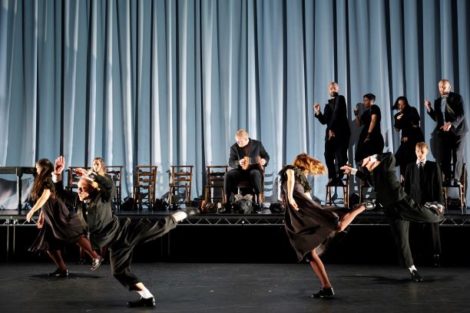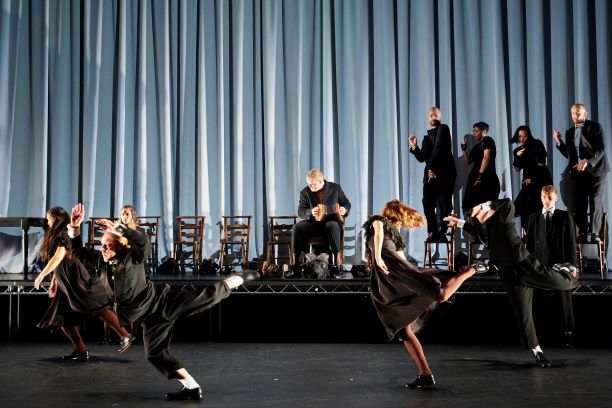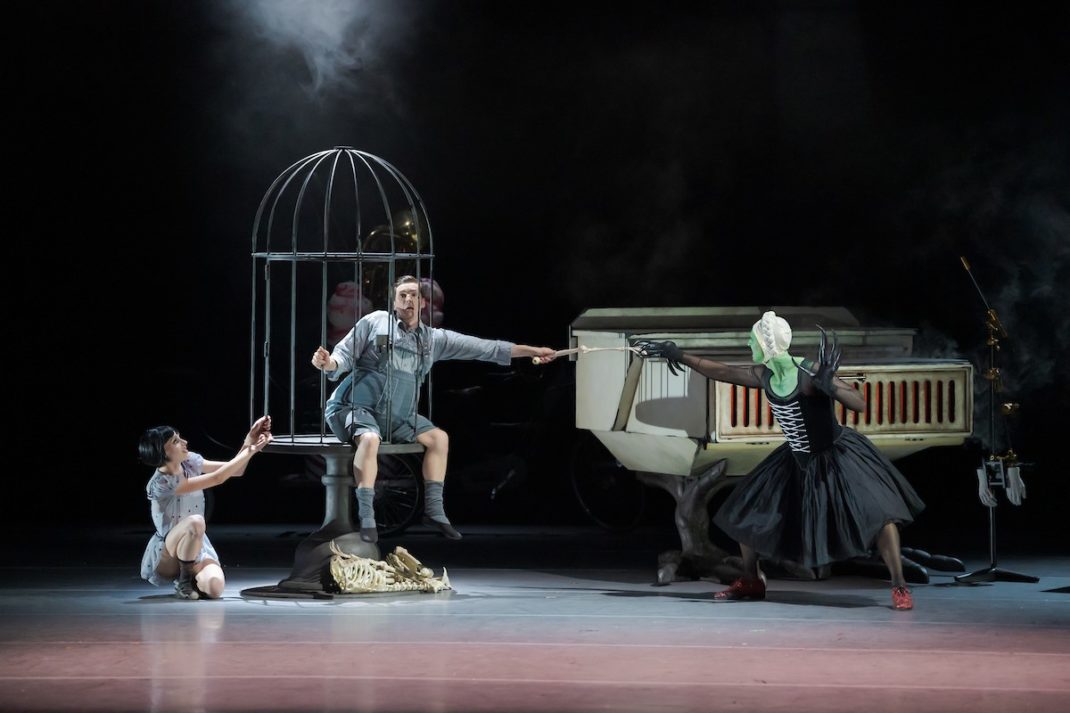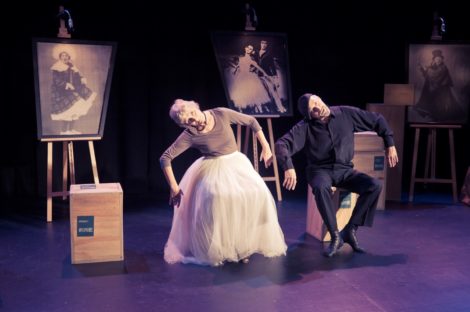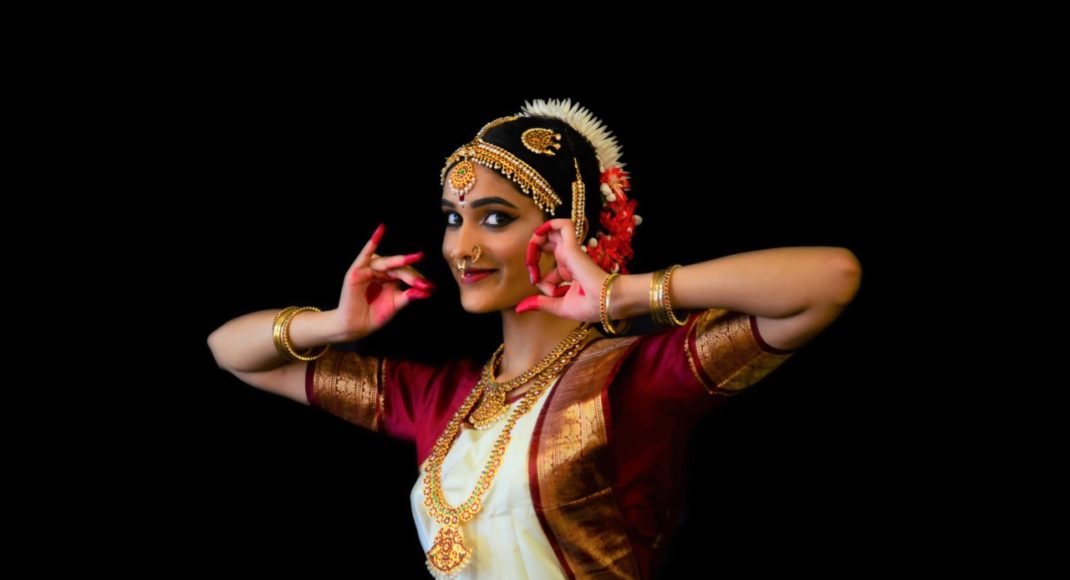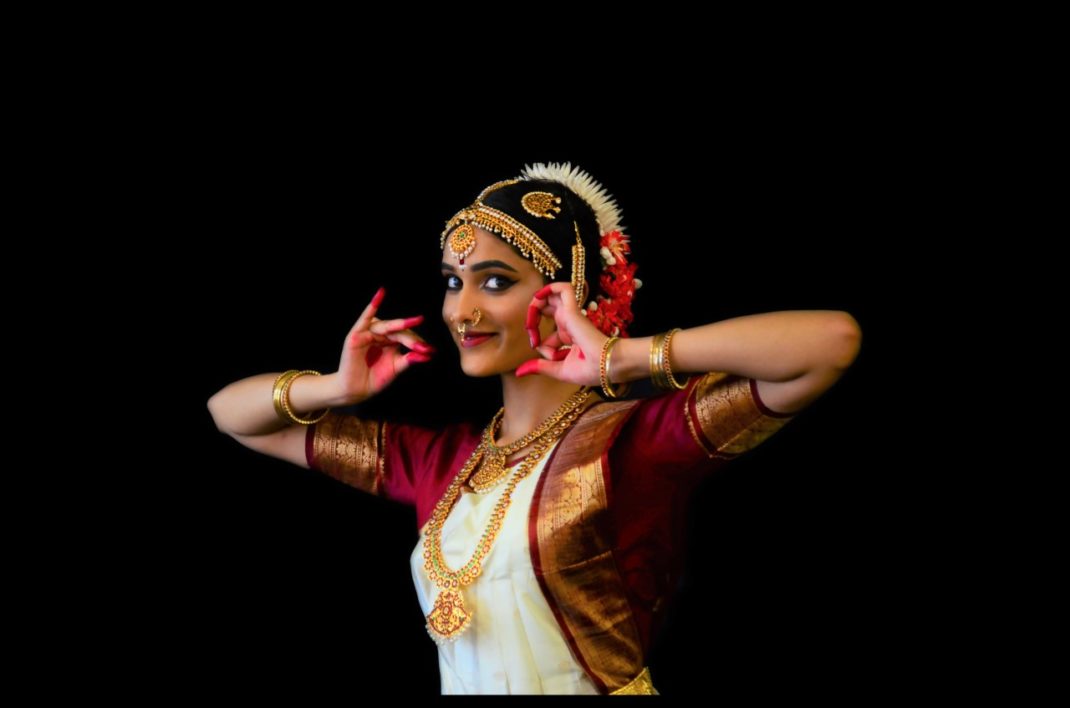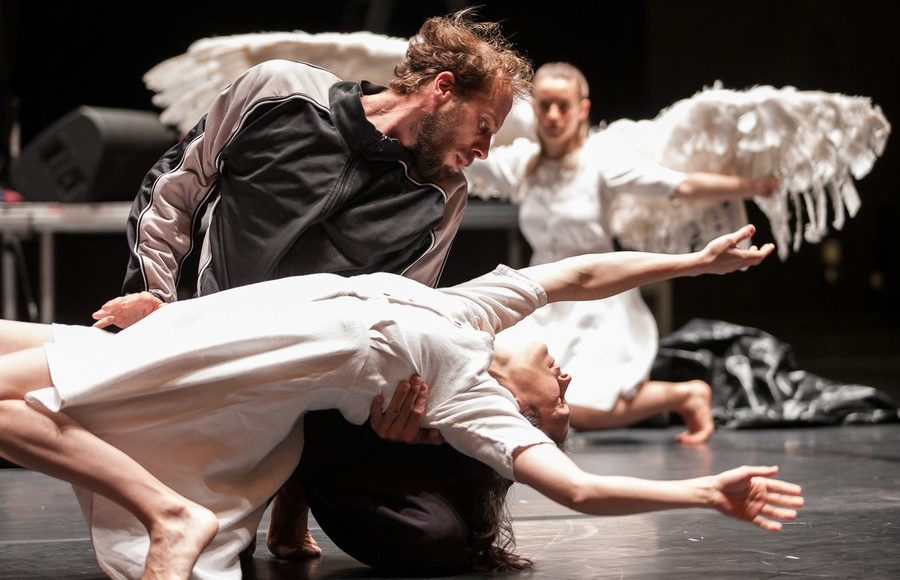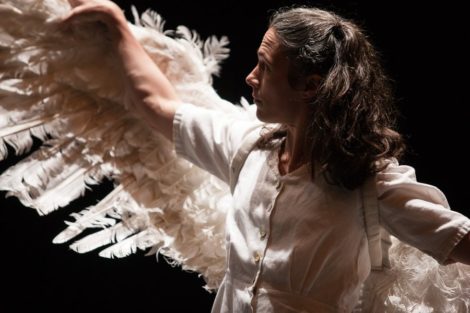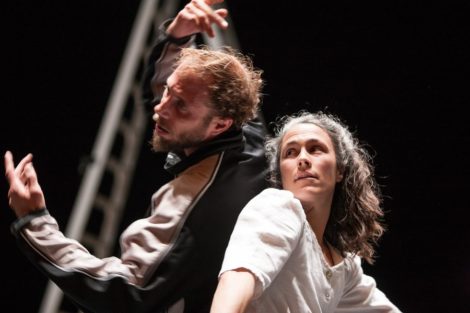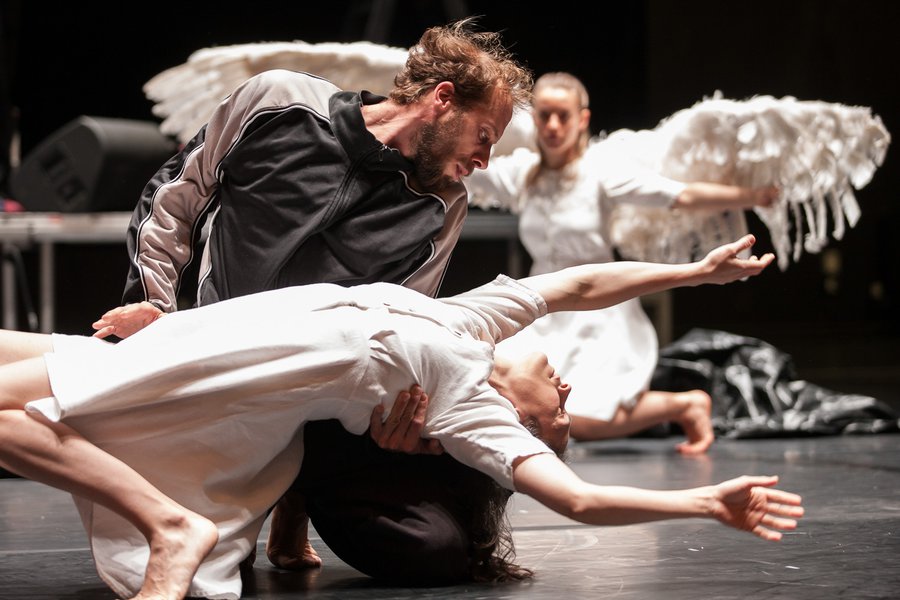5–8 March 2020, TSB Arena, Wellington
reviewed by Jennifer Shennan
When you circle the date in your diary for a show choreographed by Michael Keegan-Dolan and his company Teaċ Daṁsa (House of Dance), you expect a wild ride with infusions of Gaelic spirit, memory and vocabulary. There will be stunning movers, musicians onstage, a choreographed mosaic of themes that may be light on narrative yet teeming with ideas, atmospheric lighting design and a visual epilogue of staggering proportions. So how does Mám deliver?
The New Zealand Festival of Arts invited a Wellington residency a year ago for Keegan-Dolan and Teaċ Daṁsa to kickstart the making of Mám, subsequently developed in tandem with Dublin Theatre Festival and Sadler’s Wells London. (At least one of the local dancers involved made it through to the final cast. The printed program gives space to ads for other Festival shows in town, for non-Festival shows and for a restaurant, yet, disappointingly, no profiles of tonight’s performers, so no highlighting is made of that local involvement. One of my absolutely favourite dancers in the world was in the workshop but isn’t in this cast. Where is he, I wonder?)
For Mám we are in the TSB Arena, a vast dark cavern of a venue, possibly the ugliest in Wellington, named for a bank. You’ve been to shows here before—David Byrne, Leonard Cohen, Bob Dylan, Patti Smith, Robert Lepage’s Seven Streams of the River Ota, once to WOW (World of Wearable Art), and some years to the Indian Festival of Light, Diwali. All of which has nothing to do with Mám, or perhaps something, or perhaps everything, if you believe in the resonant memories of place, which I do.
Keegan-Dolan’s first Wellington season in the 2008 festival, with his then Fabulous Beast Dance Theatre, was a visionary, heartbreaking Giselle, in the adjacent venue, Shed 6. Based on that season, some of us went to Melbourne in 2013 to see his riveting takes on Petrouchka and The Rite of Spring. He returned to Wellington for the 2014 festival to stage a throbbing Rian, and for 2018 his breathtaking masterpiece, Swan Lake—Loch na h’Eala, both of those at St.James Theatre. Each of his works has invoked memories of the others. The Bull we only know by reputation here, but some claim it was his finest.
The word Mám is Gaelic for mountain pass, yoke, threshold, handful. The work is all of these, and is less and more than these. The opening image is of a giant-headed ram sitting centre stage, vaping smoke and playing concertina. Is he the Devil of Old Ireland, or God’s Jester? Will he be shorn for wool to knit a giant-sized Aran sweater to clothe the world? Is the choreography all just a knitting pattern for that cosmic garment? He removes his mask so these questions now become rhetorical. Downstage of the musician is a young girl wearing a white (Communion?) dress and lying on a table, her feet towards the audience.
The dancers in Teaċ Daṁsa present as a community, not a tiered hierarchy but a large group of people moving in sync, though, refreshingly, not in unison. Individuals alternate in a series of striking cameo solos. When one of them staggers to fall, a swift response from others catches him just in time. When one urgently seeks comfort, embraces are offered to her. The young girl is peripatetic among them though often seems isolated, and a number of her encounters with adults have an ambiguous aspect. The dancers fill the space with a myriad of moves at high speed yet no crashes ensue. There is much wild whirling and there’s watchful standing still. There’s opportunity on the dance floor for a couple of couples to waltz closely but only briefly, so don’t blink. There are chairs used as supports, for sitting, for planking, as dervish sleeves, or as shields and weapons of war. You might interpret these motifs and messages as literal or metaphorical, political or personal, or all of these, but there’s no doubt about the skill with which they are executed.
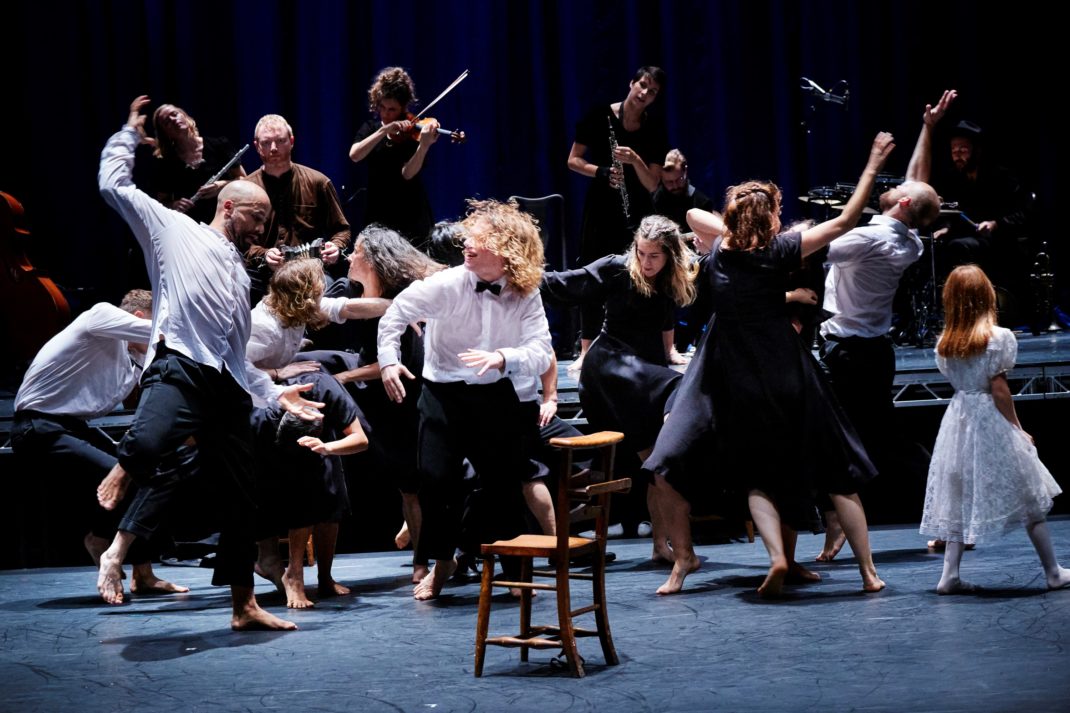
There are no star performers but the planet among them is concertina virtuoso, Cormac Bagley, who coaxes the history of the world out of his trio of pitched instruments. Stargaze, an unconventional ensemble of remarkable musicians, arrives in the second half.
There is a token sharing of food and drink—not breaking bread, nor any elegant afternoon tea, just a few small packets of crisps (made from potatoes of course) and a can of beer or fizzy drink, today’s Last Supper? An item of clothing is removed, a jacket say, or shoes, then replaced. It’s not organized into ritual, yet some of the repeated moves suggest gestures with early religious connotation, such as hands in prayer, a sign of the cross, a genuflection, on your knees. Some of the footwork might later grow into a jig or a reel but Riverdance would be unlikely to recognise that.
Vast curtains—black, then white, then blue—are rent asunder as though an era has passed, a layer peeled away, a temple destroyed. Is this a take on history, or are we being drawn towards some inner space or sanctum, a denouement, apotheosis, apparition, prayer, hope—all, or none, of the above?
The rhythms shaping all these moves are as clear and precise as life at the level of physics. At a social level, the numerous encounters between performers might seem random yet are in fact all tightly choreographed. It makes for an unpredictable 90mins of riveting performance which ricochets around the audience leaving some thrilled, some confronted, some admiring, some bemused, some on their feet, some unengaged, some planning to come back for another viewing.
A million moves are matched to as many notes in the music. My abiding memory of the evening will be those occasional moments where percussive, precise, swift, strong movements of pulsing and heartbeating are slowed to half tempo, and a sinewy adagio of limb, head or torso is allowed to move at its own safe pace, of breathing and savouring, which is to say a language of love and compassion. Such transitions slay me, every time, even if the overall choreographic development does not transport me as totally as the poetry and pathos within other works by Keegan-Dolan have.
In various public venues in Wellington, even in churches before funerals, a show these days starts with the announcement, a legal requirement from OSH—(Occupational Safety & Health) of an earthquake warning to drop, cover and hold. Sometimes this is delivered with a coy humour that rarks an audience up so as to then deflate nervousness. Other times, as here, it was ignored—and fair enough because the show itself is earthquake enough in its implications and suggestions. A quiet walk home afterwards, along Wellington’s waterfront, city lights reflecting in the harbour, calm now though the air is still freezing from the earlier southerly, a gibbous moon in a clear sky, the same moon that shines on us and on Ireland. Ngā hau e whā.
Jennifer Shennan, 6 March 2020
Featured image: Scene from Mám, Teaċ Daṁsa, Wellington 2020. Photo: © Ros Kavanagh
